Common but like all Boletes they can take time to spot, once one is found you will usually find more in the area. This mushroom can be much maligned by foragers as the texture is a bit soft and slimy when cooked but if the pores are removed and the mushroom fried hard or dried, re-hydrated and cooked the texture is very much improved.
Home / Mushroom Guide /
Red Cracking Bolete
Red Cracking Bolete
| Mushroom Type | |
| Common Names |
Red Cracking Bolete (EN), Cap Tyllog Craciog Coch (CY), Suchogrzybek Złotopory (PL), Arany Tinóru (HU) |
| Scientific Name |
Boletus / Xerocomellus chrysenteron |
| Season Start |
Jul |
| Season End |
Oct |
| Average Mushroom height (CM) |
5-9 |
| Average Cap width (CM) |
5-9 |
Please note that each and every mushroom you come across may vary in appearance to these photos.
Cap
5-9 cm. A dull smooth brown cap when young then cracking to show pale yellow/buff underneath with hints of red. Where slugs have eaten the cap, which they often do, the damage shows red.
Pores
Angular yellow pores that can green slightly with age. Bruises greenish. Xerocomoid Boletes have pore tubes that will generally split in half if the cap is torn apart, other Boletes pore tubes will normally separate and remain whole leaving them unbroken.
Stem
5-9 cm long, 1-1.5 cm diameter. Buff to yellow with red fibres overlaid especially from the middle to the base.
Flesh
White to cream in the cap with slight blueing above the pores after a couple of minutes, more red in the stem especially towards the base.
Possible Confusion
Being a relatively small Bolete with the cracking top and red showing through with damage it is hard to confuse this fungi apart from with other Xerocomoid Boletes. All are edible. Xerocomoid Boletes have pore tubes that will generally split in half if the cap is torn apart, other Boletes pore tubes will normally separate and remain whole leaving them unbroken.
Spore Print
Olive green to brown. Subfusiform.
Taste / Smell
Not distinctive when fresh, similar to the Penny Bun when cooked.
Frequency
Common.



 (62 votes, average: 3.73 out of 5)
(62 votes, average: 3.73 out of 5)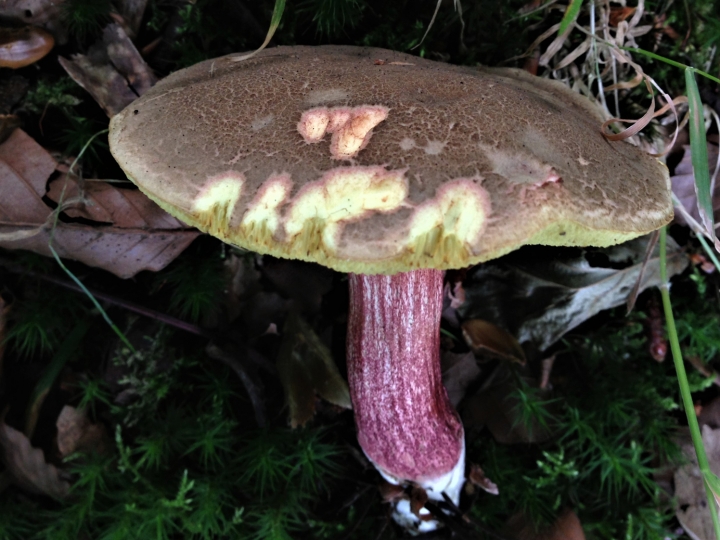















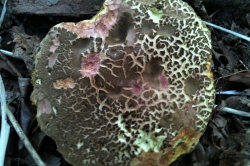
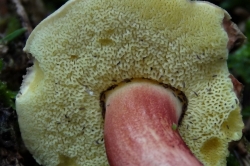
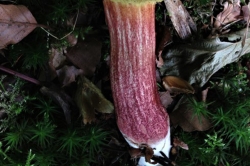
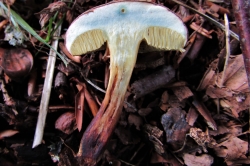
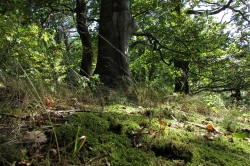






Leave a Reply